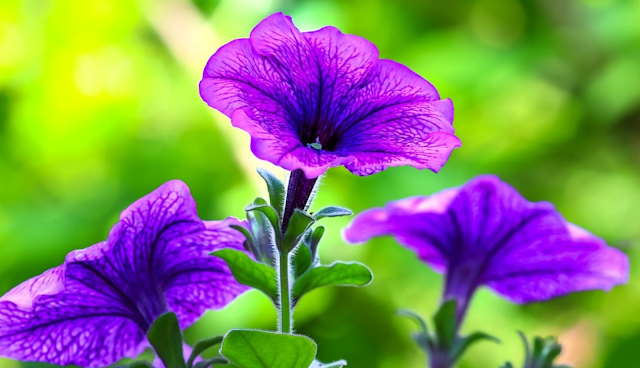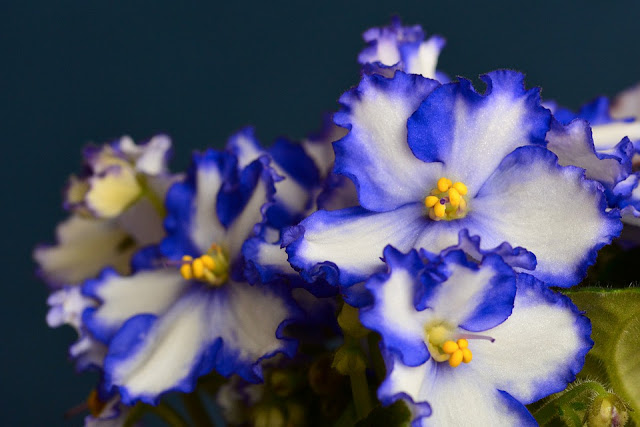Wednesday 27 September 2023
Tuesday 15 March 2022
The process is when pollen is transferred by animals
The process is when pollen is transferred by animals.
The process of transferring pollen from one plant to another. Pollen grains are tiny structures that contain male gametes (sperm) and female gametes (egg cells). When two plants of different species come into contact, pollen grains are released from the stamens of the flower on the first plant. These pollen grains land on the pistils of the second plant where they germinate and grow into new flowers. This process is called pollination.
How does pollen transfer from plant to animal?
Pollen grains contain tiny structures called pollens. When these grains land on the fur or feathers of an insect, they stick to them. The insects then take the pollen back to their bodies where it germinates into new plants. This process is known as pollination.
Pollen is carried through the air by wind and water. Animals such as bees, birds, bats, and butterflies are responsible for transferring pollen between plants.
What do we call the process of transferring pollen?
We call this process pollination. It's a common name used to describe how pollen gets from one plant to another plant.
What happens if there is no pollination?
If there is no pollination, seeds will not be produced and the plant dies.
A:
The term "pollination" refers to the transfer of pollen from the male reproductive organs of a plant to the ovaries of another plant.
B:
The word 'pollen' comes from the Greek word 'pollo', meaning feather.
C:
Pollination is the process in which pollen is transferred from one plant to another via the agency of an insect.
A:
I think you're looking for the word pollinate.
To fertilize; bring forth fruit or seed.
To cause the development of; promote growth.
D:
In biology, pollination is the transfer of pollen from one plant to the stigma of another plant.
E:
Pollen is the male part of a flowering plant's reproductive system.
F:
Pollen is the male haploid cell contained within a flower.
G:
Pollen is a small grain-like structure found inside the anthers of most flowering plants.
H:
Pollen is the male gamete of a flowering plant.
I:
Pollen is a type of microscopic body produced by some plants.
J:
Pollen is made up of male gametes.
K:
Pollen is a powdery substance found in the anthers of many flowering plants.
L:
Pollen is the male gamete produced by flowering plants.
M:
Pollen is a powdery substance produced by flowering plants.
Thursday 23 September 2021
Giant Nolina "Nolina parryi"
Overall, this species is larger than other nolinas. It has numerous strap-shaped leaves 2–4 cm wide, with fine teeth on the margins and no curling fibers. Its flower stalk is 2.5– 9 cm diam. at the base, the bracts are persistent. One to several trunks, 0.5–2.1 m tall. leaf Flat; margins with close, minute teeth, not shredding; blade 50–140 cm long, 2–4 cm broad. flower In panicles 90–180 cm tall, 20–130 cm wide; stalk at the base 26–90 mm diam.; bracts persistent; tepals 2–5 mm long; Apr.–Jun. fruit Capsule 9–13 mm long, about as wide, notched at the base and tip.
HABITAT/RANGE
Native; rocky areas in deserts and piñon–juniper woodland, 900–2,100 m; s. Calif. Similar species Easily confused with Chaparral Beargrass. Yucca: Yuccas There are about 40 species of Yucca; they range from the U.S. to Central America. North of the U.S.–Mexico border are 28 species, a few of which are treelike. They occur from sea-level to moderate elevations, mostly in arid situations.
Yuccas (a.k.a. Spanish bayonets, palmillas) are evergreen plants of arid lands, easily recognized by their usually branched habit, the commonly stiff, pointed leaves in tight spirals, forming rosettes, and their large clusters of bell-shaped creamy-white flowers. Unlike the similar, but never treelike, century plants (Agave), yuccas bloom year after year.
For a number of years after leaves die, they will clothe the trunk; eventually, they drop, exposing a thin, rind-like grayish bark. leaf Simple, long, slender, ending in a sharp spine, hairless, more or less concave on the upper surface, margins sometimes with minute teeth, often shredding into coarse fibers. flower Inflorescence a large ovoid panicle-like cluster of showy, bisexual, radially symmetric waxy flowers; 6 tepals, separate or joined at the base, 6 stamens, and a superior, 6-sided, 3-chambered ovary. fruit Stiffly woody-papery capsule, or fleshy squash-like berry that very slowly dries and is indehiscent. In each of the fruit’s 3 chambers are many flat black seeds, tightly stacked.
Typically about half, the seeds are consumed by moth larvae. Each yucca species relies on a single species of moth (genera Parategiticula and Tegiticula) for cross-pollination and seed production. The moth carries pollen from one plant to another, packing it into a receptacle on the stigma. It then lays eggs on the developing ovary, and the larvae feed upon some but not all of the seeds.
The emergence of adult moths from pupae in the soil must be timed to correspond to the flowering of the yuccas. Synchronization is frequently poor, and in some dry years, yuccas flower poorly. As “insurance” to perpetuate the symbiosis, not all pupae break dormancy in any one year, and yuccas flower to greater or lesser extent year after year.
Yucca flowers are an edible delicacy, and their consumption contributes to reduced seed production in some populations in rural Mexico. The leaves have been used to make sandals, coarse rope, and baskets. An extract from the subterranean stem of some species has detergent qualities and may be used as soap or shampoo.
Friday 17 September 2021
Tree heliotrope
tree heliotrope
other common names: beach heliotrope, messers chmidia, tahinu
scientific name: Tournefortia argentea
family: Boraginaceae (borage family)
natural setting/location: Indian and the Pacific Ocean coastal areas
current status in the wild in Hawai'i: common in coastal areas
propagation
Form: seeds; cuttings 6–12" long (hardened wood or green wood, but green wood is more prone to rot-ting); air layering.
Pre-planting treatment: use medium rooting hormone on cuttings
planting depth: sow seeds ¼" deep in the medium; insert the base of cutting 2–4" into medium
germination time:2–4 weeks
cutting rooting time:3–6 weeks
preferred Production Conditions
general soil characteristics: sandy, well-drained
soil pH: 6.0–7.5
light: full sun
water: drought tolerant
temperature: 65–95°F
Elevation: 10–50'
salt tolerance: good
wind resistance: good
fertilizer needs medium
recommended spacing: 15' apart
adaptation to growing in containers: not recommended
pruning: prune to keep within picking height and induce branching; do not prune into old wood
special cultural hints: do not overwater
suggested companion plantings: low-growing beach plants.
Tuesday 15 October 2019
How to Grow The African violet (Saintpaulia Hybrids)
Read More - How to Care and Grow Perennial Iris Flower
Affiliates Links:
- How One Woman Discovered the Female Fat-Loss Code Missed by Modern Medicine And Lost 84lbs Using a Simple 2-Step Ritual That 100% Guarantees Shocking Daily Weight Loss
- 60 Seconds Habit ! That Reversed Type 2 Diabetes and Melted 56 lbs of Fat
- Boost Your Energy, Immune System, Sexual Function, Strength & Athletic Performance
- Diabetes Remedy # 1 Mega Offer for 2019
Monday 19 August 2019
Amaranthus tricolor, (edible amaranth)
Wednesday 1 May 2019
Tabebuia and Handroanthus
Sunday 20 May 2018
Lilac or Syringa
 Most lilacs are not very
graceful; they get tall and leggy, and their leaves re a magnet for mildew in
late summer. But their fragrant flowers redeem them, and they will always be a
favorite with gardeners. The common lilac (Syringa vulgaris) is the one most
often grown. It has spawned hybrids by the hundreds in shades of lavender,
purple, rose and white. It is very hardy and seen it grow as tall as 20 feet.
Most lilacs are not very
graceful; they get tall and leggy, and their leaves re a magnet for mildew in
late summer. But their fragrant flowers redeem them, and they will always be a
favorite with gardeners. The common lilac (Syringa vulgaris) is the one most
often grown. It has spawned hybrids by the hundreds in shades of lavender,
purple, rose and white. It is very hardy and seen it grow as tall as 20 feet. Sunday 13 May 2018
Bromeliad: The Most Exotic Houseplant
 Best of all, this colorful
spectacle lasts about six months. The plant grows 1 to 2 feet tall. Another
gorgeous long blooming bromeliad is Guzmania
lingulata, which is about the same size, with long green, strap like
leaves sometimes striped with purple and a red-orange cluster of bracts
enclosing white flowers from late winter or summer. Bromeliads with stiff,
variegated leaves like good, bright light and often will take some direct sun
but don’t expose them to strong midday sun in summer those with softer, green
leaves are fairly shade tolerant.
Best of all, this colorful
spectacle lasts about six months. The plant grows 1 to 2 feet tall. Another
gorgeous long blooming bromeliad is Guzmania
lingulata, which is about the same size, with long green, strap like
leaves sometimes striped with purple and a red-orange cluster of bracts
enclosing white flowers from late winter or summer. Bromeliads with stiff,
variegated leaves like good, bright light and often will take some direct sun
but don’t expose them to strong midday sun in summer those with softer, green
leaves are fairly shade tolerant. 











